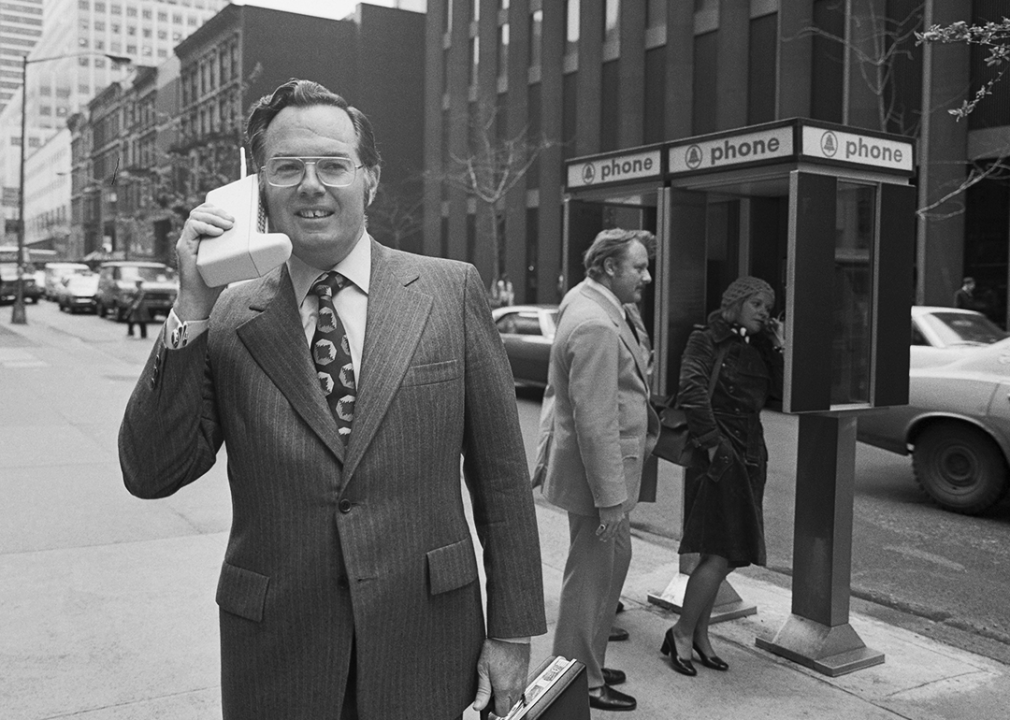Since the first cellphone came out in the '80s, how have they changed?
Published 3:30 pm Wednesday, May 15, 2024
Since the first cellphone came out in the ’80s, how have they changed?
“We used to tell the story then that someday when you’re born you would be assigned a phone number. If you didn’t answer the phone, you would die.”
That’s what Martin Cooper, the inventor of the cellphone, told CNN in a 2023 interview about the anniversary of the revolutionary communication device. In the 1970s (and well into the ’90s), cellphones were clunky devices that couldn’t even fit in a pocket. Now, they’re a part of everyday life.
A 2023 Pew Research Center study reports that 97% of Americans own a cellphone of some kind. Not only do they have a portable device capable of making and taking calls, but they also likely have a slew of apps and an internet browser that could do everything a computer could do. However, it was hard to imagine cellphones taking over the world when Cooper, an engineer at Motorola, and his team first started developing them. It would take more than a decade for the concept to finally take hold.
Trending
Spokeo dove into news sources like CNN, data from research centers like Pew Research Center, and online encyclopedias to uncover the history of cellphones from their birth to today.
Motorola makes the first cellphone
The Motorola DynaTAC (Dynamic Adaptive Total Area Coverage) 8000X, the first commercial cellphone launched for commercial use in 1983. However, it was in development for nearly a decade before that. While competitors focused on putting phones in cars, developer Motorola sought to put phones in the hands of consumers.
Martin Cooper demonstrated the first cellphone call to his rival Joel Engel, then head of AT&T’s Bell Labs at the time, with a little bit of friendly gloating. However, this cellphone was nowhere near the same standard as smartphones today.
The DynaTAC 8000X weighed over 2 lbs. and measured nearly a foot long. Its primitive battery only ran for 30 minutes, even though it took nearly 10 hours to charge. In comparison, the iPhone 15 weighs about 6 ounces and has a screen about 6 inches long.
The original DynaTAC, or what people lovingly called “the brick,” cost a whopping $3,995, and companies had yet to figure out how to mass-manufacture enough of them to meet the growing demand. Back then, it was the peak of progress.
“Consumers were so impressed by the concept of being always accessible with a portable phone that waiting lists for the DynaTAC 8000X were in the thousands,” Motorola design engineer Rudy Krolopp said (via PM Network). “In 1983, the notion of simply making wireless phone calls was revolutionary.”
From cellphone to smartphone
Trending
From there, cellphones kept getting smarter. “Smartphone” usually refers to a cellphone that can also function as a handheld computer. People often cite IBM’s Simon, which went on sale in 1994, as the world’s first smartphone. In addition to phone calls, it could send and receive emails and faxes and featured a few applications like a clock, contact list, calculator, calendar, and notepad. No one had coined the word smartphone yet—it was marketed as a personal digital assistant.
The Simon was also the first commercially sold cellphone with a touchscreen. It required a stylus instead of responding to human touch like touchscreens of today, but Time highlighted that having any touchscreen at all was innovative for the time. Compared with the DynaTAC, the Simon weighed half as much at just over 1 lb. and offered double the talk time when fully charged. It didn’t have internet connectivity, as the World Wide Web hadn’t yet gained the dominance it would eventually have globally.
That honor goes to the Nokia 9000 Communicator, launched in 1996, two years after IBM announced the Simon. It was a sliding phone that functioned as a cellphone when shut and as a computer when opened lengthwise. As seen in the Mobile Phone Museum, it featured a pea-green graphical display and a full QWERTY keyboard that mimicked a computer. However, internet connection hadn’t evolved to be as speedy as today. What used to be a barely usable feature in early smartphones eventually became lightning fast with the introduction of faster data processing through increasingly quicker internet connections.
Smartphone revolution: iPhone and beyond
While smartphones technically existed since 1994, they didn’t become a must-have for everyday folks until the iPhone started the trend.
Apple released its first iPhone in 2007. T-Mobile followed up in 2008 with the HTC Dream, the first Android-based smartphone. Smartphone successors would surpass the BlackBerry, a now-defunct cellphone line that was leading the pack at the time.
Interest in the iPhone grew throughout the decade rather than all at once. Apple sold only 8.7 million iPhones in its first quarter of 2010. In comparison, it sold 47 million iPhones in its first quarter of 2018. Apple is one of the main competitors in the smartphone space, next to Samsung.
People used to look to Apple for MP3 players like the iPod. The iPhone has all the functions of an iPod and combines them with advanced cellphone capabilities. Even if it had a supposedly short battery life compared to the BlackBerry, according to Larry Conlee, then BlackBerry COO, the iPhone had a minimalist design that appealed to a niche audience. One of the iPhone’s most notable features was how it removed buttons to go for a touchscreen. What used to be an anomaly has now become the standard in smartphones.
Smartphones have replaced many everyday items, including calculators, cameras, notepads, flashlights, and more. In fact, Apple developers told IGN in a 2023 interview that the iPhone 15 Pro would be the “best game console.” Only the future will tell what comes next for pocket technology.
Story editing by Carren Jao. Copy editing by Kristen Wegrzyn.
![]()
This story originally appeared on Spokeo and was produced and
distributed in partnership with Stacker Studio.






